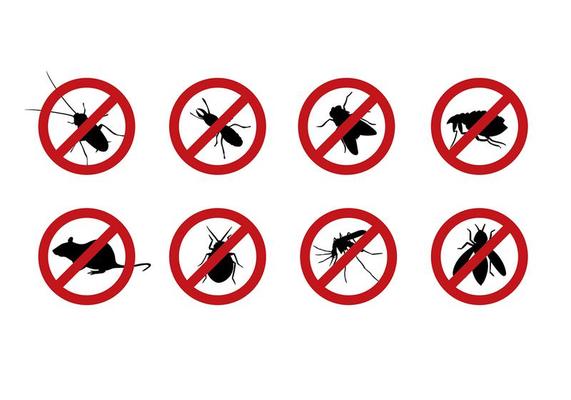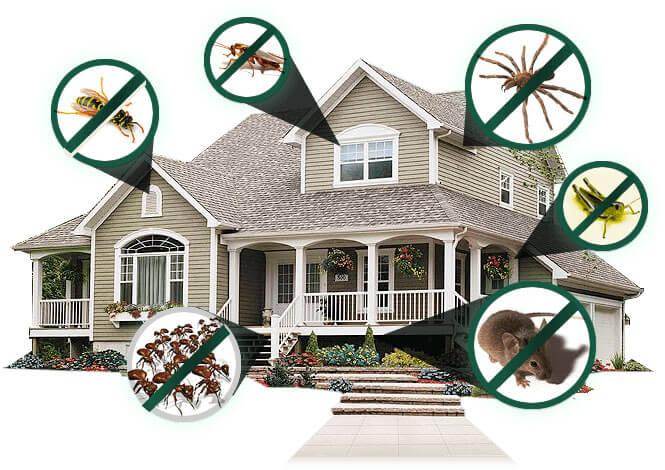Reliable Insect Control Services: An Extensive Consider Elimination Techniques and Avoidance Steps
In the realm of pest control services, the effective management of invasions requires a meticulous method that integrates different methods and measures for both eradication and prevention. From Integrated Insect Monitoring (IPM) techniques that focus on sustainable remedies to chemical extermination techniques designed for targeted removal, the arsenal against insects is multifaceted and substantial. Biological control techniques and physical avoidance steps offer different courses to effectively combating unwanted trespassers. Nonetheless, the key to an extensive bug control strategy lies not just in the strategies themselves, yet also in the thorough expert evaluation procedures that precede and inform them. By understanding the ins and outs of each approach and just how they interplay, one can truly realize the complexity and effectiveness of modern-day pest control solutions.

Integrated Insect Administration (IPM) Approaches
Integrated Pest Monitoring (IPM) Methods encompass a thorough strategy to pest control that concentrates on monitoring, control, and prevention approaches to effectively take care of insect populaces. By incorporating different methods, IPM intends to reduce the impact of parasites while additionally decreasing the reliance on chemical pesticides. Prevention exists at the core of IPM, highlighting methods like proper cleanliness, maintenance of health, and sealing entry factors to discourage insects from infesting buildings. Monitoring plays a vital role in IPM by consistently identifying and inspecting insect degrees to establish the appropriate treatment thresholds. Control techniques in IPM prioritize using physical, organic, and social approaches before transforming to chemical therapies as a last hope. These approaches consist of introducing all-natural killers, environment adjustment, and using trapping tools to keep bug populations in check. In general, IPM fosters a environmentally mindful and lasting strategy to pest administration, promoting long-lasting options that protect both human health and the ecological community.
Chemical Elimination Methods
Chemical extermination techniques are generally employed in pest control services to properly get rid of parasite populaces that posture a danger to human health and home. These methods include the usage of various chemical materials particularly developed to target and get rid of insects such as insects, rodents, and other unwanted creatures. The application of pesticides, pesticides, rodenticides, and various other chemical representatives is carefully managed to ensure optimum performance while reducing dangers to people, animals, and the atmosphere.
One of the vital advantages of chemical elimination methods is their capability to provide quick and targeted outcomes, making them particularly beneficial in instances of extreme problems or urgent bug control needs - a1 pest control in portland oregon bed bugs. Nonetheless, it is vital to stress the relevance of correct handling, application, and disposal of these chemical items to stop unplanned harm
In addition, incorporated bug administration (IPM) approaches commonly integrate chemical extermination strategies with various other techniques such as cleanliness, environment adjustment, and organic controls to create a thorough and lasting bug control method. By integrating chemical elimination strategies deliberately within an IPM framework, pest control solutions can effectively take care of pest populations while decreasing potential threats to human health and wellness and the environment.
Organic Bug Control Techniques
Employing natural predators and bloodsuckers to manage insect populaces is a lasting method known as organic parasite control. portland exterminators a1 for bed bugs. One usual biological control technique article source includes introducing natural opponents of the target pest varieties, such as ladybugs for aphid control or nematodes for termite invasions.
Another efficient organic control strategy is using microbial pesticides. These are naturally taking place microorganisms, such as bacteria, viruses, and fungis, that particularly target and contaminate particular insect varieties. By utilizing these microbial representatives, bug populaces can be successfully decreased without harming helpful organisms or causing damage to the setting.
Physical Insect Prevention Measures
Applying physical bug avoidance measures includes using barriers and structural alterations to prevent pests from infesting a residential property or getting in. Installing door sweeps, screens on you can look here home windows, and securing splits in the foundation can help stop insects like pests and rodents from acquiring accessibility indoors.
Another physical avoidance action is using barriers like secure fencing to keep larger pests such as deer or raccoons away from the home. Setting up mesh or cord screens around yards can secure plants from being harmed by insects. Proper waste administration, consisting of protecting trash bin with tight-fitting lids, is crucial in hindering pests like insects, rodents, and raccoons. By implementing these physical bug avoidance steps, homeowner can significantly reduce the risk of parasite infestations and the damages they can create.
Professional Insect Evaluation Procedures
Conducting systematic and extensive insect evaluations is a basic element of specialist bug management protocols. Professional bug inspectors are trained to meticulously take a look at buildings for indicators of invasions, identifying pest types, access factors, and conducive problems. The inspection procedure usually begins with a comprehensive analysis of both the inside and outside of the properties. This includes monitoring for pest droppings, munch marks, nests, and any type of structural damages that may indicate bug task. In addition, examiners may make use of specific tools such as moisture meters and borescopes to discover hidden invasions within walls or crawl rooms.

Final Thought
To conclude, effective parasite control solutions employ a range of methods, including Integrated Parasite Administration approaches, chemical elimination methods, biological controls, and physical prevention steps. Professional look at these guys parasite assessment treatments play an essential role in recognizing and resolving pest problems in a prompt way. By implementing a combination of these methods, building owners can successfully take care of and stop pest problems.
From Integrated Parasite Administration (IPM) techniques that focus on lasting services to chemical elimination strategies made for targeted elimination, the toolbox versus insects is diverse and vast.Integrated Insect Monitoring (IPM) Techniques incorporate a detailed approach to pest control that focuses on control, surveillance, and avoidance approaches to efficiently manage pest populaces.Chemical extermination methods are typically employed in insect control services to properly eliminate pest populaces that pose a danger to human health and property.Utilizing natural predators and bloodsuckers to handle parasite populaces is a lasting approach recognized as biological insect control.In conclusion, efficient bug control solutions use a range of techniques, consisting of Integrated Parasite Administration approaches, chemical extermination techniques, biological controls, and physical avoidance procedures.